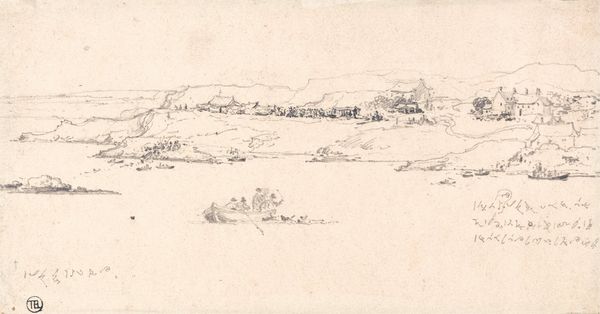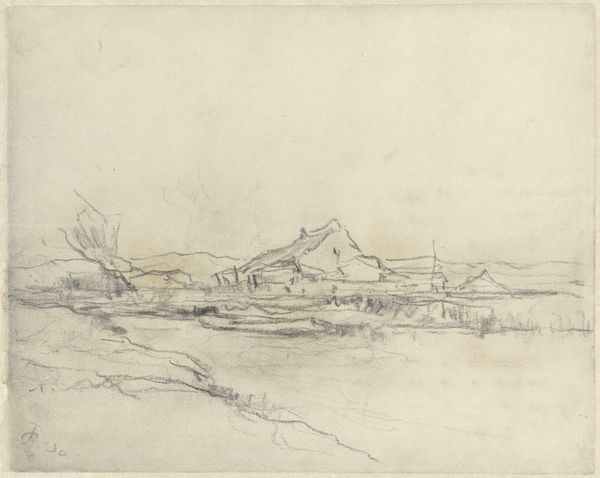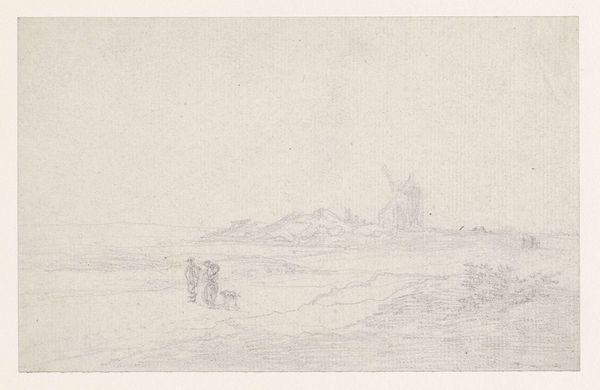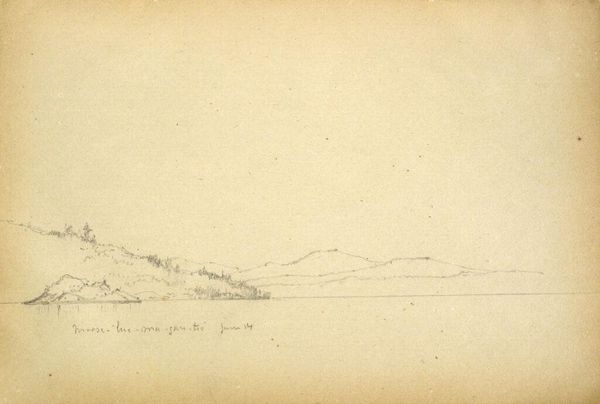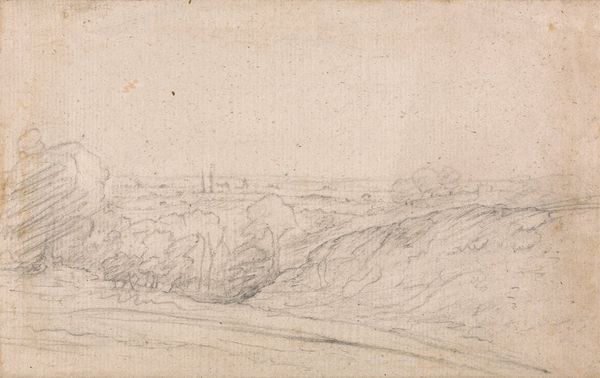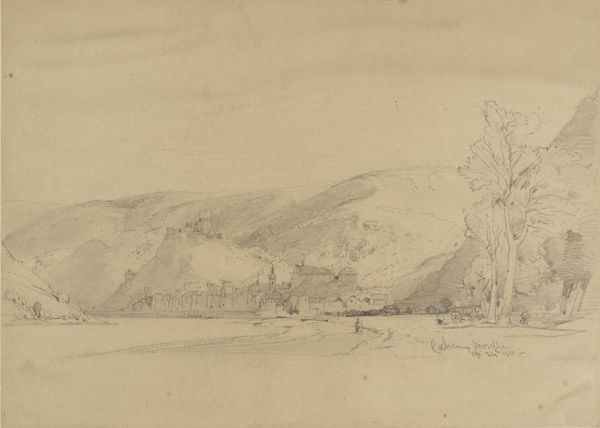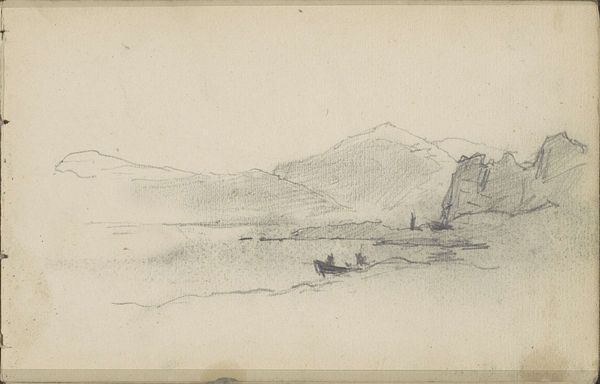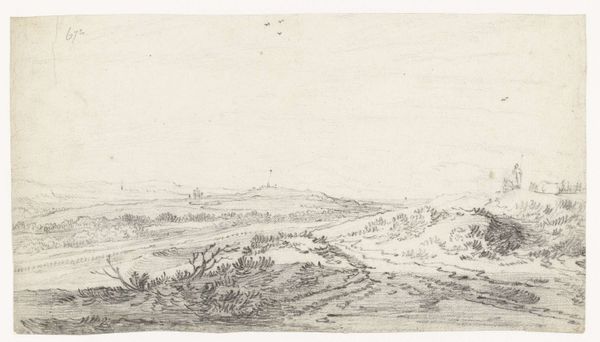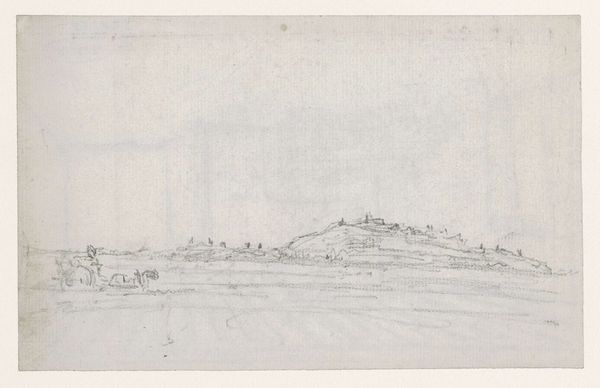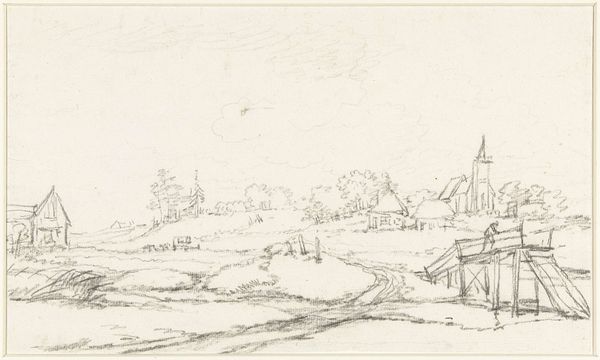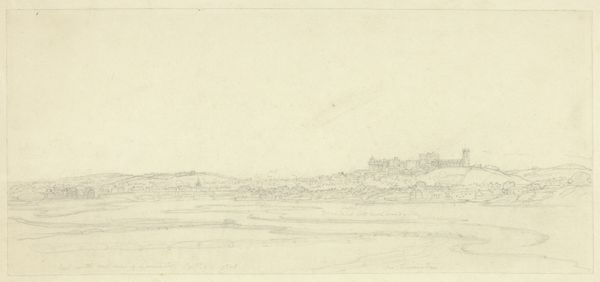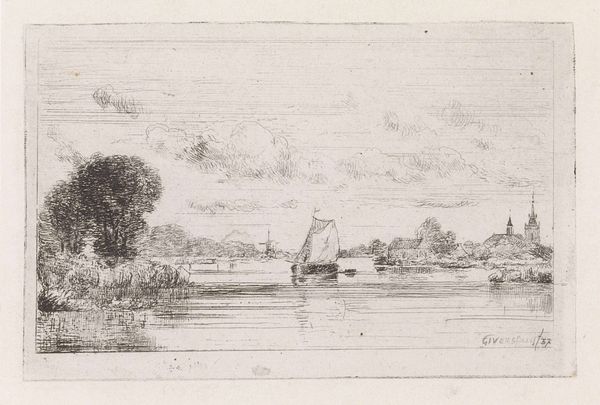
drawing, pencil
#
drawing
#
pencil sketch
#
landscape
#
pencil
#
realism
Dimensions: height 105 mm, width 225 mm
Copyright: Rijks Museum: Open Domain
Curator: I am immediately struck by the subtlety of this pencil sketch. There’s a quiet stillness about it. Editor: Absolutely. This is “Coastal Landscape near Torbay” by Everhardus Koster. It's a pencil drawing, likely done between 1827 and 1892. Curator: The landscape certainly evokes a sense of placidity and perhaps even loneliness, especially with that solitary cottage huddled by the water. Editor: It’s the material itself, isn’t it? Pencil is such a direct, accessible medium. Koster's rapid strokes emphasize the work that went into documenting this place, connecting us directly to his experience of witnessing the coastline. I find myself thinking about the paper itself. Its texture, how it receives the graphite, and what the local industry of paper production must have looked like at this time and place. Curator: A place, yes, and an idea. I see the water, but also a gateway, the cottage becoming symbolic. A portal, an archetype…the viewer connects not just to place, but the ideal of solitude. Editor: It reminds us of how even ‘natural’ landscapes are always already altered. You see the cottage, I see labor, social structures, and resource management right there. Even the choice to represent it, making sketches reproducible and marketable, speaks volumes about artistic economies. Curator: I suppose for me it highlights the interplay between nature and the human spirit and explores how external landscapes mirror our internal states. In the boats drifting idly in the water, I can’t help but also detect perhaps the dreams or longings of those who might live there, those figures walking casually along the banks there. Editor: We read such different things in those figures! To me they underline that people are inherently part of their environmental context, transforming it and transforming because of it. They're involved in the processes. The pencil marks record the landscape in material form—as resources ready for transformation. Curator: Fascinating. It’s almost as if the image allows both of us to have these unique dialogues to find a separate truth for our own experiences. Editor: Indeed. It's about considering both the means and the meanings, how the thing came to be and the narratives it inevitably carries.
Comments
No comments
Be the first to comment and join the conversation on the ultimate creative platform.

